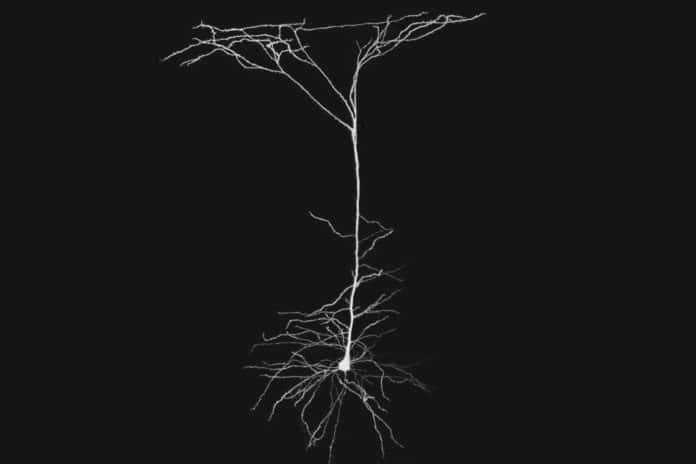The nervous system serves as the manager of the body since it controls the functions of every other system. It communicates with bodily systems in order to coordinate performance and to meet the needs of the body from moment to moment.
The nervous system uses specialized cells, called neurons, to generate and relay electrical messages, called action potentials, to control these functions. Neurons have several key structures that are necessary for their function, and one of the most important structures in the cell is the dendrite.
In order for neurons to become active, they must receive action potentials or other stimuli. Dendrites are the structures on the neuron that receive electrical messages.
However, dendrites are not just passive information-carriers, but they also play a surprisingly large role in neurons’ ability to translate incoming signals into electrical activity, suggests a new study from MIT.
Past studies have suspected that the dendrites activate rarely in specific circumstances. But, this new study stands as contradictory and suggests that dendrites are nearly always active when the main cell body of the neuron is active.
The study, in other words, suggests that the role of dendrites in the brain’s computational ability is much larger than had previously been thought.
Mark Harnett, who is the Fred and Carole Middleton Career Development Assistant Professor of Brain and Cognitive Sciences said, “It’s really quite different than how the field had been thinking about this. This is evidence that dendrites are actively engaged in producing and shaping the outputs of neurons.”
To explore dendrites’ role in neural computation, the MIT team used calcium imaging to simultaneously measure activity in both the soma and dendrites of individual neurons in the visual cortex of the brain. Calcium flows into neurons when they are electrically active, so this measurement allowed the researchers to compare the activity of dendrites and soma of the same neuron. The imaging was done while mice performed simple tasks such as running on a treadmill or watching a movie.
Unexpectedly, the researchers found that activity in the soma was highly correlated with dendrite activity. That is, when the soma of a particular neuron was active, the dendrites of that neuron were also active most of the time. This was particularly surprising because the animals weren’t performing any kind of cognitively demanding task.
Harnett said, “They weren’t engaged in a task where they had to really perform and call upon cognitive processes or memory. This is pretty simple, low-level processing, and already we have evidence for active dendritic processing in almost all the neurons. We were really surprised to see that.”
Still, scientists have no precise idea of how dendritic input contributes to neurons’ overall activity, or what exactly the neurons they studied are doing.
Lou Beaulieu-Laroche, an MIT graduate student and the lead author of the study said, “We know that some of those neurons respond to some visual stimuli, but we don’t necessarily know what those individual neurons are representing. All we can say is that whatever the neuron is representing, the dendrites are actively participating in that.”
Marla Feller, a professor of neurobiology at the University of California at Berkeley said, “While more work remains to determine exactly how the activity in the dendrites and the soma are linked, it is this tour-de-force in vivo measurements that are critical for explicitly testing hypotheses regarding electrical signaling in neurons.”
Scientists are want to explore how dendritic activity contributes to overall neuronal function by manipulating dendrite activity and then measuring how it affects the activity of the cell body.
Harnett said, “One hypothesis is that dendritic activity will actually sharpen up for representing features of a task you taught the animals, and all the other dendritic activity, and all the other somatic activity, is going to get dampened down in the rest of the cortical cells that are not involved.”
The study is published in the journal Neuron on June 6.
The research was funded by the Natural Sciences and Engineering Research Council of Canada and the U.S. National Institutes of Health.
